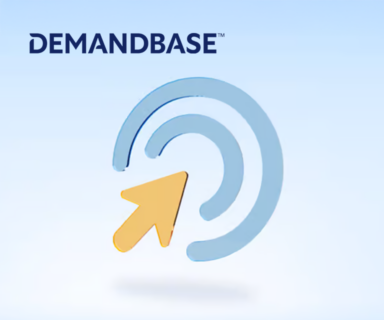 I’m a sales guy—and I love what’s going on right now in marketing. You call it ABM. I call it the right way for sales and marketing to work together and maximize our company’s business. That said, I feel for marketing folks out there around this stuff, because there’s a lot of confusion about what sales teams want from marketing and how best to make it happen. From where I sit, a whole lot of what’s being called ABM either isn’t going to help very much or, flat out, it’s just the same-old, same-old with a new set of shiny marketing initials. I wanted to give you my view of ABM wrongs and rights, starting from where us sales guys need to take part of the blame.
I’m a sales guy—and I love what’s going on right now in marketing. You call it ABM. I call it the right way for sales and marketing to work together and maximize our company’s business. That said, I feel for marketing folks out there around this stuff, because there’s a lot of confusion about what sales teams want from marketing and how best to make it happen. From where I sit, a whole lot of what’s being called ABM either isn’t going to help very much or, flat out, it’s just the same-old, same-old with a new set of shiny marketing initials. I wanted to give you my view of ABM wrongs and rights, starting from where us sales guys need to take part of the blame.
Starting with the ABM list
Let’s begin with the obvious: Sales guys have to do the best they can with what they’re given. Once we have our assignments, we have to buckle down and go after them. This is why, when asked by marketers for a list of priority accounts, the most pragmatic thing for us to do is provide a list of already-quota’d accounts that we want help with. You ask for a list, we give you a list. And then we hope you’ll make magic with it. Obviously, you want to avoid this situation. You need to get way out ahead of this so that the ABM list has a lot more strategic logic around it. When you do this early, we can all agree on the list and we can get the time and resources we need to do ABM right.
Beyond who’s on the list
As I noted, salespeople are realists. We work with what we have. Our KPIs are simple and direct: Either we make our numbers and get paid, or we don’t. So what we care most about from ABM is that it helps us make our numbers: in this quarter, and the next, and the next. Who is on the list isn’t what really matters. What’s critical is how the accounts deliver against quota. With the list decided, we expect ABM to help: every day, month, quarter and year.
Can’t you simply “activate” those accounts with ads? Can’t you just do more lead gen?
Short answer? No. As long as you guys have the budget, I love advertising. The more air cover you can give my teams, the better. If I put my GM hat on, though, then I have to look at how productive this stuff really is. The best that most “ABM” ad offerings can do for you is to IP address-match accounts on your list and then “air cover” the heck out them, from the CEO down to the intern. Unpleasant for them. Wasteful for you. And furthermore, ads alone can’t deliver the volume of engaged people that my teams need to keep them busy. Simply put, if you can, you should do helpful advertising only to the people who are in market for a solution like yours. And you need other ways to get me to the right people.
So what about content marketing and demand gen? Well, isn’t that what you’ve been doing all along? Something’s got to change here, right? Remember, I need your help finding more demand per account—on this special ABM list—than we’ve been able to do in the past. My recommendation is that we have to do something that takes us beyond the old-fashioned thinking here about leads. I need signals in the account that will tell my teams to pay attention and go after it. And I need the confidence that those signals represent real demand—so it can’t be just one person downloading a lot of stuff. I want to see patterns—more people involved, more information on their interests, a buying team on a buyer’s journey. I don’t care much how you get this to me, but I suspect that you can’t do it through emailing alone.
Real integration will really help
Look, I’m not dismissing ads and lead gen out of hand. Part of the solution here has got to be in both targeting and integrating this stuff better. If you can target the right people, you’re off to a good start. Now, to get the reinforcing effects that are proven to work, you have to make sure that your email reaches those same people. That’s what I think will maximize the impact on the marketing front end anyway. I’d make very sure that you and your providers can make this integration happen!
Philosophy: The proper way to build and provision an ABM list
There are many ways to come up with an ABM list that we can agree on. For my money, it’s best to start from a clear Ideal Customer Profile (ICP). But things quickly get complicated thereafter. And remember, we need to make quota basically every day. That’s why I urge you to be somewhat philosophy-driven here. We want an approach to building and provisioning the list with data that maximizes our chances at revenue in the near term. Direct access to real demand is what I’m always looking for. So how to go about that?
Clean up what we’ve got
Again, I can take responsibility here but that doesn’t solve the issue, and it has to be solved or we all fail. When matched to your CRM data, you’ll find your ABM list is full of holes—persona, names, contact details, etc. For ABM to perform better than regular marketing, this has got to be fixed before we try to make things happen, or they aren’t going to happen!
Study your history
If you’ve had at least some engagement success with accounts on the list in the past, figure out how you accomplished it and do more of that now. My team is looking for more action per account than ever before. You need to find a way to generate that action fast.
Just add a lot of new names?
I get it. We’re filling in gaps. But folks, that’s exactly the way we’ve always done it—brute force! We can do much better. The names we want are of the right people. The people who will deliver against our quota—and do so productively—are the ones who want our solutions. That’s what I need your help to find.
What about a predictive model?
If you have the time, predictive models are good, when they work. The first challenge is that they take a while to build and tune. The second challenge is that they project the model onto “lookalike” accounts. So then we’re back to adding names and brute forcing it with my SDRs again, or waiting while you probe these accounts for signs of demand. That can’t produce in the near term. I need you to find people looking for our solutions now. You need to find sources of demand behavior that work faster and better than classic demand gen.
Introducing the power of behavioral insights: Real purchase intent data
Just like marketers, my sales teams thrive on information. Contacts help, but there’s a ton of work and cost in grinding through them. Signals of change within a company and the like are good, but on their own, they don’t give you enough to make a definitive play. Behavioral data is different. It can tell you that a buying group is coming together. It can tell you they’re making a move. It can tell you the feature/function priorities and more. This is exactly the information that, for my clients, is bringing ABM performance to life.
Over the last 20 years, TechTarget has built the world’s largest demand engine for enterprise tech. To identify the vast majority of companies—and the people within them—who are actively searching for a specific tech solution, we maintain more than 140 hyper-granular tech websites that have 19+ million members who have opted in to receive information from our tech-vendor clients. We build our exclusive content to serve our audiences’ buying needs, and this creates the data we have on your market and the active demand in it. You can slice and dice it to perfectly match your GTM and specific ABM plays against your ICPs. This is the ABM list demand access that is transforming sales and marketing achievement right now.
Real purchase intent data gives you:
- More demand now. Unrivaled access to opted-in active researchers on topics specific to what you sell—at scale.
- Immediately actionable ABM. You can act as soon as you have the data. No need to fill gaps. No need to validate models.
- Actual buying teams. Your sellers can see the specific people in their buyer’s journeys and know what types of messaging will engage them and break through.
- True integration. To nurture ABM accounts effectively, we enable you to seamlessly synchronize your outreach and inbound marketing—air cover, demand gen, website, telephone—to maximize effectiveness.
- Results to share. ABM thrives on building its own momentum. We’ve developed our ROI dashboard to help you understand your program’s impact and communicate it effectively to broader constituencies.
A final word on your ABM
I work with hundreds of ABM practitioners. They’re all different in a lot of ways. At the same time, however, their ABM successes have many key elements in common. Over the past couple of years, I’ve seen sales and marketing begin to work together around ABM. I love that. Now, instead of over-complicating the effort (and then struggling to get anything going), I’m seeing simplified approaches that focus on real performance improvement every step of the way. That’s how progress takes off. Reach out to me today. I think we can help your ABM work even better.




